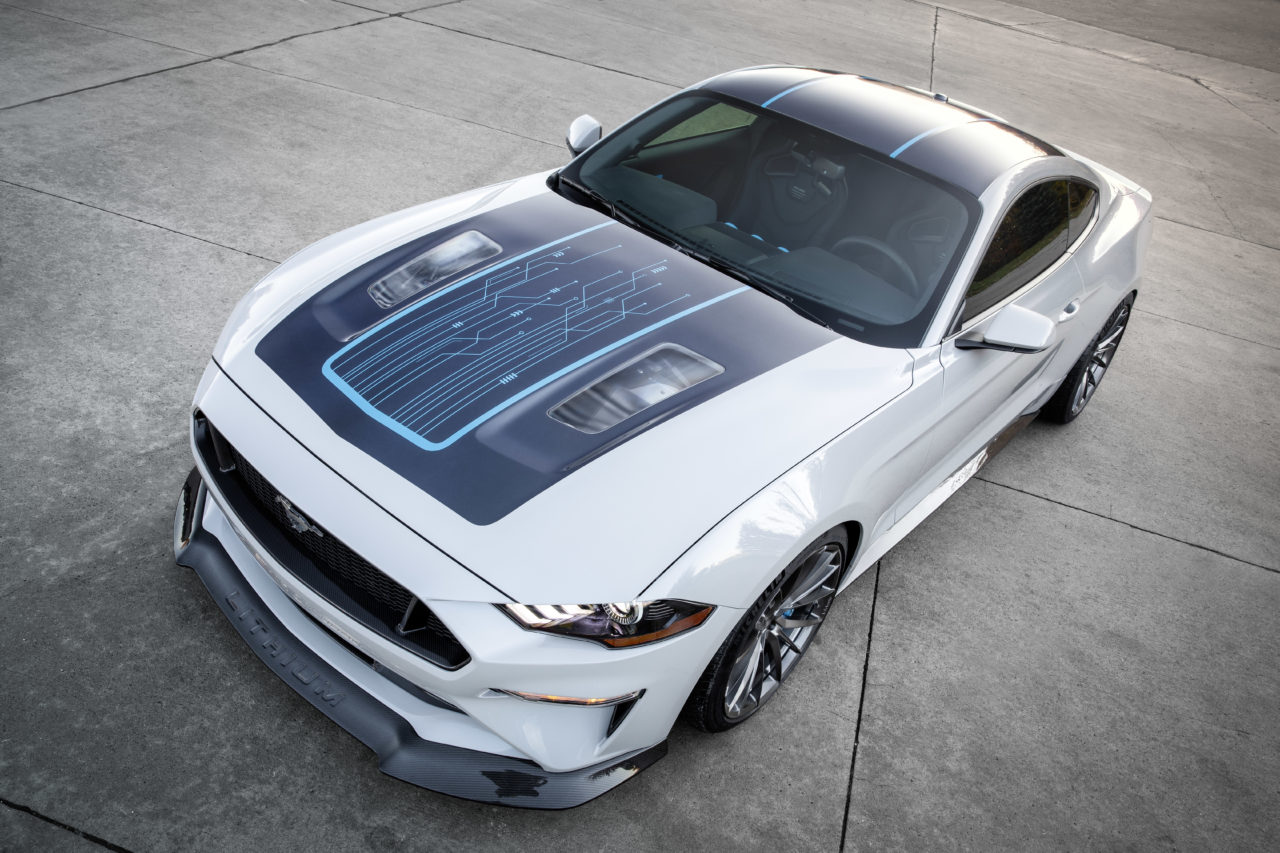
Ford and Webasto today reveal Mustang Lithium, an ultra-high-performance battery electric Mustang fastback prototype. With more than 1,000 ft.-lbs. of torque and more than 900 horsepower instantaneously available, this Mustang amps muscle car performance to a new level and helps gauge the level of interest the next wave of performance customers have in lightning-quick performance that only fully electric powertrains can deliver.
The Mustang Lithium build is not only a one-off prototype to showcase electrification on the world’s best-selling sports car but also a testbed for battery and thermal management technologies Webasto and Ford are creating for the growing e-mobility automotive segment.
blockquote>“Ford has made no secret of the fact that we are electrifying our most popular nameplates,” said Hau Thai-Tang, Ford’s Chief Product Development and Purchasing Officer. “This one-off Mustang prototype is a great opportunity for us, together with Webasto, to showcase to our customers what a new electrified powertrains can do for performance in a car they already know and love.”
An electrified street-ready beast, Mustang Lithium is low and sleek, with custom carbon fiber body components, a 1.0-inch lowered stance and 20-inch staggered fitting forged wheels. Under the hood, the differences are electrifying: a Phi-Power dual-core electric motor and dual power inverters – all powered by an 800-volt Webasto battery system with EVDrive Technology that can discharge a mega-watt of electrical energy.
At 800 volts, that’s twice the voltage of most electric cars on the road today. This allows the system to be lighter, more powerful and generate less heat, and more electric force than most battery-electric systems on the road today.
In a unique twist, Mustang Lithium features a manual transmission and uses a drag-strip proven Calimer-version of the Getrag MT82 6-speed transmission with billet internals to handle the 1,000 ft.-lbs. of torque. Ford Performance half shafts and Super 8.8 Torsen® differential help supply power to the road via lightweight Forgeline wheels wearing Michelin® Pilot® Sport 4S tires.
Additional features include Ford Performance’s Track Handling Pack and strut tower brace, Brembo six-piston front brakes from the Shelby GT350R, Sankuer Composite Technologies side splitters and rear diffuser, plus Webasto hood with see-through polycarbonate windows, TurboDX charging solution and TurboCord portable charger.
Mustang Lithium features a unique set of drive modes that apply a controlled amount of torque for different driving scenarios including: Valet, Sport, Track and Beast, and are instantly available on demand via a custom in-dash 10.4-inch touchscreen display.
“Very similar to Ford’s push for vehicle electrification, this is an innovative way to further the technologies we’re developing to enable vehicle electrification while creating a vision of how cool the future of electric performance will be,” said Mark Denny, Webasto Customized Solutions North America President and CEO.
Electric drive is essential to the future of Ford
For more than 20 years, Ford has brought electric and hybrid-electric vehicles to the masses and has produced more than 800,000 around the globe.
Ford is investing more than $11.5 billion in electrified vehicles by 2022, including an all-new Mustang-inspired fully electric SUV in 2020 with range of 300 miles and an all-electric F-150 in a few years.
As Ford actively refreshes its lineup, the all-new 2020 Ford Explorer and Escape hybrid SUVs feature the company’s fourth-generation lithium-ion battery technology, similar to the energy storage system used on the Mustang Lithium. An F-150 Hybrid also arrives next year. More than the instantaneous torque of these electric drive powertrains provide, greater levels of torque management and driver control can be enabled, plus zero emissions.




